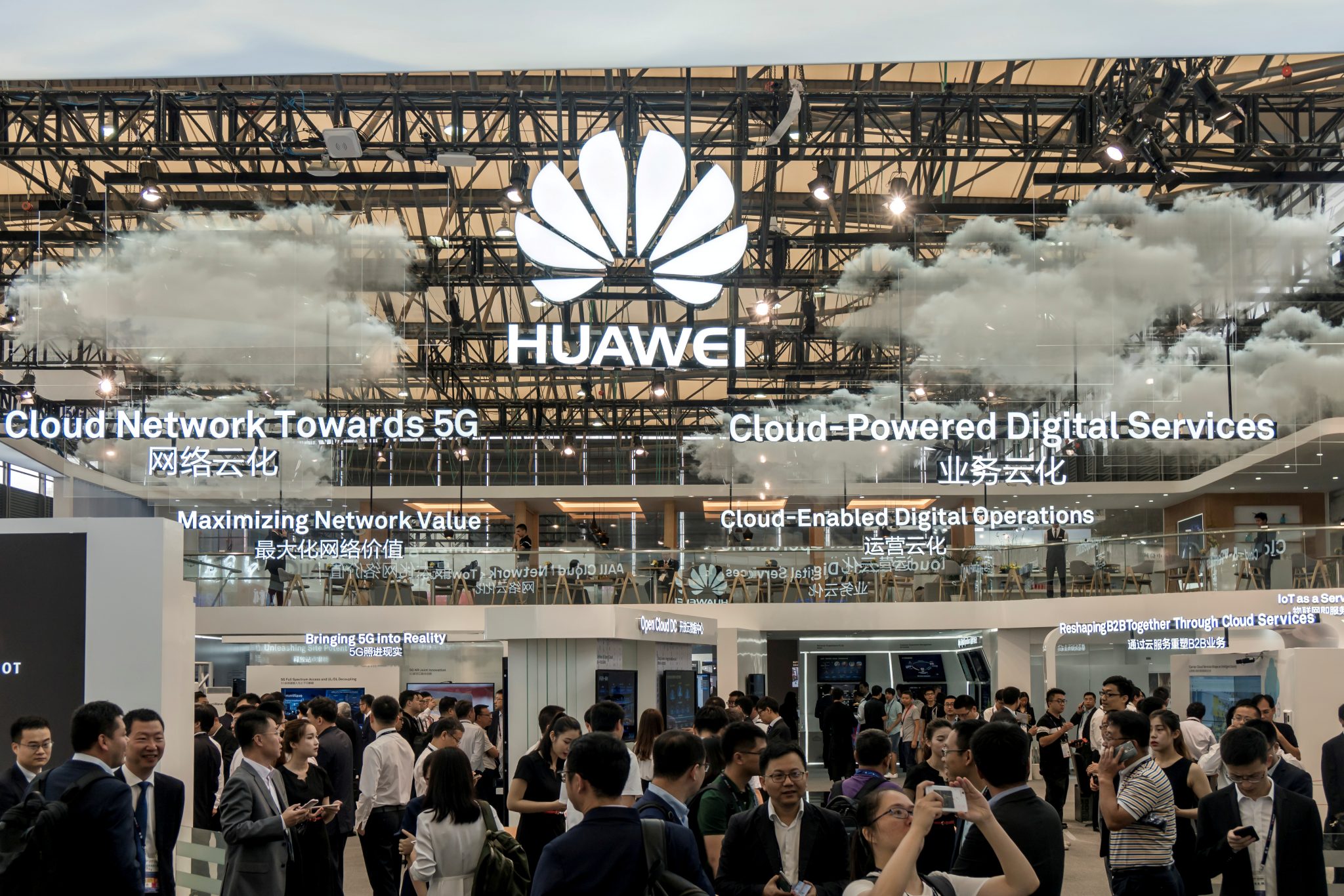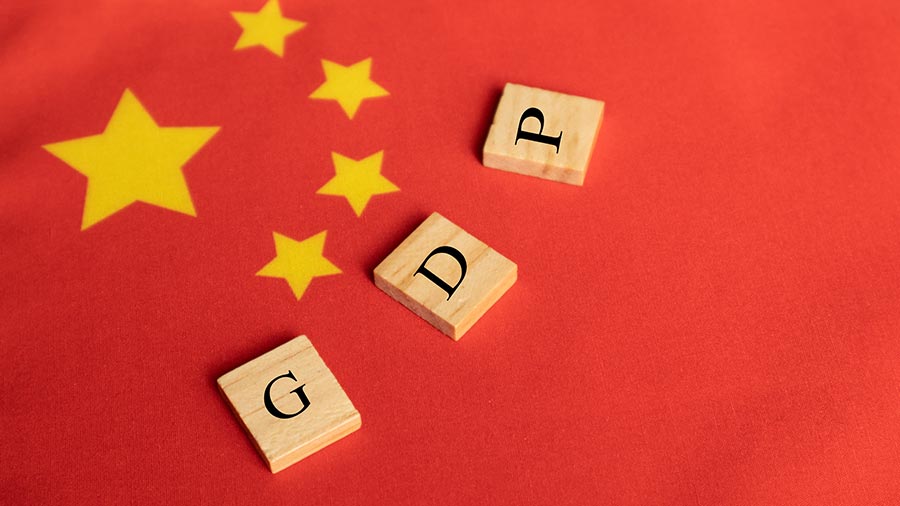China
Mao’s ‘people’s war’ revisited : China’s military cyber power and ‘cyber militias’
Mao’s ‘people’s war’ doctrine stressed that China’s military advantage lay in mobilising the vast Chinese population

China’s military cyber power capabilities are increasingly being augmented by a civilian dimension to increase their potency.
However, in this relatively new domain for civil–military integration, the Chinese Communist Party (CCP) is taking action to consolidate state control over China’s cyber power projection.
Just before the 19th CCP Congress in 2018, the Cyberspace Administration of China released one of the most authoritative policy documents to date outlining Chinese thinking on cyberspace.
The document outlines the need to ‘promote the deepened development of military–civilian integration for cybersecurity and informatisation’. It also features instructions to implement civil–military integration systems, cybersecurity projects and innovation policies.
This policy document followed the creation in January 2017 of the Central Commission for Integrated Military and Civilian Development.
Under the instructions of the Commission, China’s first ‘cybersecurity innovation centre’ was established in December 2017. Operated by 360 Enterprise Security Group (one of China’s primary cybersecurity companies), the centre’s remit is to foster private sector cooperation to ‘help [the military] win future cyber wars’.
The strong civil–military dimension of Chinese military power has existed since the formation of the People’s Republic of China. Mao’s ‘people’s war’ doctrine stressed that China’s military advantage lay in mobilising the vast Chinese population.
The push to leverage the civilian sector for the development of China’s military cyber capabilities is gaining steam outside of military circles as well.
The National Outline for Medium and Long Term Science and Technology Development Planning (2006–20) emphasises the importance of integrating civilian and military scientific and technical efforts.
The PLA has heeded such calls, deepening its partnerships with the civilian telecommunications sector — especially ZTE and Huawei — and developing further links with universities.
China’s ‘cyber militias’ are one of the clearest products of this shift
These groups have grown to feature a collective membership of more than 10 million people since the turn of the millennium, and are often based in universities and civilian corporations. While the PLA endorsed cyber militias as a concept in 2006, these groups will likely be restrained to cyber espionage as opposed to offensive cyber operations, given the risk of potentially undermining the work of regular PLA cyber units.
Of the cyber militias, China’s infamous ‘patriotic hackers’ are perhaps the most well known. While these hackers can be a useful tool in hampering state adversaries, they can also often be unruly, erratic and heavy-handed.
These hackers are typically driven by popular nationalism, as demonstrated by instances like the cyber stoushes between US and Chinese hackers that followed the US EP-3 incident in 2001.
The Strategic Support Force (SSF) has been the PLA’s answer to mitigating the risk of erratic cyber militias while still harnessing their capabilities. Established in December 2015 to merge and centralise all of the PLA’s space, cyber and ISR (intelligence, surveillance and reconnaissance) capabilities in one body, the SSF has also assumed control over a number of PLA research institutes.
The integration of these civilian entities into formalised state structures like the SSF represents a desire by China to mitigate the volatility of these hackers.
But this integration means the PLA and the Chinese state will have to forego plausible deniability when their hackers’ operations are uncovered by other states. The improved US ability to attribute cyber operations to Chinese actors, combined with Washington’s budding approach of sanctioning major Chinese state-owned enterprises in retaliation, has made Beijing realise it needs to run a tighter ship.
The centralisation that Beijing is pursuing is a manifestation of the so-called ‘corporate state’ that increasingly defines the Chinese political system. Here, the CCP acknowledges the presence of societal interest groups as an inevitable result of a pluralising society. At the same time, the CCP seeks to co-opt or direct the behaviour of these entities to serve its ends and maintain stability.
The civil–military dimension of China’s cyber power projection has been sporadically apparent since the early 2000s. But it is only recently that we are seeing concerted efforts to leverage the civilian sphere and, more importantly, to centralise and organise it so that it can consistently serve China’s defence and military aims.
Author: Nicholas Lyall, ANU
Business
China Reports Agreement on Ceasefire between Myanmar’s Factions

Myanmar’s conflicting parties have reached a ceasefire agreement, facilitated by China, aiming to reduce violence and promote peace in the region.
Myanmar Ceasefire Agreement
In a significant development, conflicting parties in Myanmar have reached an agreement for a ceasefire, with China facilitating discussions. This breakthrough is crucial for restoring peace in a nation that has been marred by violence and political strife in recent years. The ceasefire aims to pave the way for reconciliation efforts and improve the humanitarian situation in affected areas.
Role of China
China’s involvement as a mediator highlights its growing influence in resolving regional conflicts. The Chinese government has been working closely with both sides to promote dialogue and trust, crucial elements for a long-term peace solution. Increased stability in Myanmar can benefit regional security and economic development, making China’s mediation significant.
Looking Forward
The hope is that this ceasefire will lead to further negotiations addressing underlying issues in Myanmar. While challenges remain, both parties have expressed willingness to work towards a peaceful resolution. The international community will be watching closely to see if this ceasefire can be sustained and lead to enduring peace for the people of Myanmar.
China
2024 China Economic Review: GDP, Trade, and Foreign Direct Investment Analysis

In 2024, China’s economy grew 5%, supported by stimulus measures, strong exports, and high-tech investments, despite weak domestic demand and demographic challenges. Key sectors like manufacturing and digital economy thrived, necessitating structural reforms for sustained growth into 2025.
China’s economy grew 5% in 2024, driven by stimulus measures, strong exports, and high-tech investment, despite challenges like weak domestic demand and demographic pressures. Structural reforms and targeted policies are essential for sustaining growth into 2025.
China’s economic performance in 2024 saw a return to steady growth, achieving a 5 percent GDP expansion in line with the government’s target, as per the official data released by the National Bureau of Statistics (NBS) on January 17, 2025. This outcome was largely bolstered by stimulus measures that helped drive a stronger-than-expected fourth-quarter recovery. While the country’s economy faced challenges such as declining population numbers and sluggish consumer demand, there were signs of optimism across key sectors, including industrial output and digital economy growth.
Additionally, China is beginning to pivot away from its dependence on the property sector, with the digital economy playing an increasingly significant role in economic expansion.
This article explores the major economic highlights from 2024 and examines the key trends, challenges, and opportunities that will shape China’s economy in the year ahead.
In 2024, China’s GDP reached RMB 134.91 trillion (US$18.80 trillion), maintaining its position as the second-largest economy in the world, behind only the United States, whose projected GDP for 2024 stands at approximately US$29 trillion. This reflects a year-on-year growth of 5.0 percent, in line with the government’s official target of “around 5 percent“ set during the 2024 Two Sessions. While slower than the 5.2 percent growth achieved in 2023, it highlights a stable recovery largely driven by strong export performance and targeted stimulus measures throughout the year.
The economy saw accelerated growth in the final quarter of 2024, with GDP expanding by 5.4 percent, surpassing expectations and making a substantial contribution to the overall 5.0 percent increase. Indeed, quarterly growth performance in 2024 showed steady improvement: the first quarter recorded a 5.3 percent increase, followed by 4.7 percent in Q2, and 4.6 percent in Q3.
Sectoral performance highlights revealed the manufacturing and service sectors as key drivers.
| This article was first published by China Briefing , which is produced by Dezan Shira & Associates. The firm assists foreign investors throughout Asia from offices across the world, including in in China, Hong Kong, Vietnam, Singapore, and India . Readers may write to info@dezshira.com for more support. |
Read the rest of the original article.
China
How China’s appetite for salmon could reshape global seafood markets – new research

China’s salmon demand surged 46% in 2023, prompting global exporters to respond. Challenges in domestic salmon production highlight opportunities for rainbow trout, reshaping the seafood market towards sustainability and consumer preferences.
China’s demand for farmed salmon is growing at an unprecedented pace. In 2023, its imports grew by 46% year on year – with imports of fresh and chilled Atlantic salmon up 63%.
This remarkable growth is reshaping the global seafood trade. Exporters from Scotland, Norway, Chile, Australia, Faroe Islands, Canada and Iceland are racing to supply the needs of this vast and rapidly evolving market.
At the same time, China’s efforts to produce its own Atlantic salmon have faced significant challenges, highlighting the need for substitutes like rainbow trout to meet the country’s growing appetite for seafood delicacies.
An important shift occurred in 2018, when the Chinese government permitted rainbow trout to be labelled and sold as salmon. This decision blurred the distinction between imported Atlantic salmon and locally farmed rainbow trout, creating a more accessible option for cost-sensitive consumers.
Trout is comparable to salmon in appearance and size, with firm and oily meat that has a similar orange-pink colour. Nutritionally too, the species are alike, as are the ways in which they can be cooked and prepared.
In our new research which included taste tests, we found that many Chinese consumers could not distinguish between domestic rainbow trout and imported Atlantic salmon in blind testing. But when informed about the origin, testers’ preferences shifted strongly in favour of imported Atlantic salmon, highlighting the power of provenance in consumer tastes.
Although people’s willingness to pay did not vary initially in our blind tests, it became a decisive factor once the origin of the fish was revealed.
But we found that origin alone was not enough. For our testers to be prepared to pay higher prices, they also had to like the look, smell and taste of the product more, or be persuaded by its ecolabel (indicating environmental standards).
Environmental costs
Transporting Atlantic salmon from Scottish lochs, Norwegian fjords or Chilean waters to Chinese markets involves complex logistics and significant environmental costs. The carbon footprint of this trade, combined with the resource-intensive nature of salmon aquaculture, raises critical concerns about sustainability.
These challenges are particularly pronounced in China, where consumers have a strong preference for freshness. This drives demand for quick delivery of imported salmon despite its environmental impact, and consumers are increasingly turning to online platforms to buy their seafood.
E-commerce has reshaped seafood retail in China, offering quick delivery and products that cater to consumer demand for quality and freshness. Salmon stands out in this market due to its perceived high value, premium quality and price point. Unlike other expensive seafood that often needs to be sold live to maintain its value, salmon retains its appeal when chilled or frozen.
This makes salmon particularly suited to modern retail models, where sophisticated cold-chain logistics ensure its freshness without the complexities of live transport. However, these innovations come at a cost.
The energy-intensive storage and rapid transportation required for imported salmon contribute significantly to environmental harm. As China’s seafood market continues to grow, addressing the sustainability challenges associated with this trade will be critical to balancing consumer demand with environmental responsibility. Current international certification schemes aiming to improve the sector’s sustainability have had limited impact in China so far.
A worker processing imported fresh salmon in a Beijing wholesale seafood market.
David Little, Author provided
China has made significant efforts to establish a domestic Atlantic salmon industry, but these attempts have largely been unsuccessful due to technical challenges and environmental constraints. This has left a gap that domestically farmed rainbow trout is poised to fill.
A trout farming raceway in Chengdu, China, supplied with fresh river water.
Zixuan Ma, Author provided
In 2022, China produced 37,000 tonnes of rainbow trout. This is a relatively small amount compared with international production levels, but still notable considering that rainbow trout is a new farmed species in China, unlike traditional species like carp.
However, rainbow trout farming in China is geographically constrained, as the species thrives in cooler freshwater temperatures found in higher-lying lakes and reservoirs, as well as in “raceways” (channels supplied continuously with fresh water diverted from rivers).
Advances in aquaculture systems offer a potential pathway to expand China’s production. Trout farming is a more sustainable, locally sourced alternative to Atlantic salmon that reduces the carbon footprint associated with imports and ensures fresher options for Chinese consumers. Developing a robust domestic trout industry could enhance food security, reduce dependence on imports, and create economic opportunities in rural areas.
China’s evolving seafood market offers valuable lessons for the global industry. Emphasising quality, freshness and sustainability will resonate with the increasingly sophisticated Chinese consumer.
At the same time, investment in eco-friendly aquaculture practices, both domestically and internationally, will be essential to balance the growing demand for premium seafood with environmental responsibility. These could include reducing feed waste and recirculating aquaculture systems (which filter and reuse water) to minimise water use. Recycling waste nutrients by using them elsewhere in food production could also be key.
As rainbow trout gains prominence in China’s seafood landscape, the relationship between consumer preferences, environmental concerns and economic opportunities could in turn shape the future of the global salmon trade.
If domestic fish captures a larger share of the Chinese market, salmon producers in Europe, Canada and other exporting regions may face significant challenges. This could ultimately force them to rethink their strategies in order to adapt to shifting market dynamics.
Although the goal of creating a domestic Atlantic salmon industry has proved difficult for China, trout farming presents a practical and sustainable solution for its luxury seafood sector.
This article is republished from The Conversation under a Creative Commons license. Read the original article.







